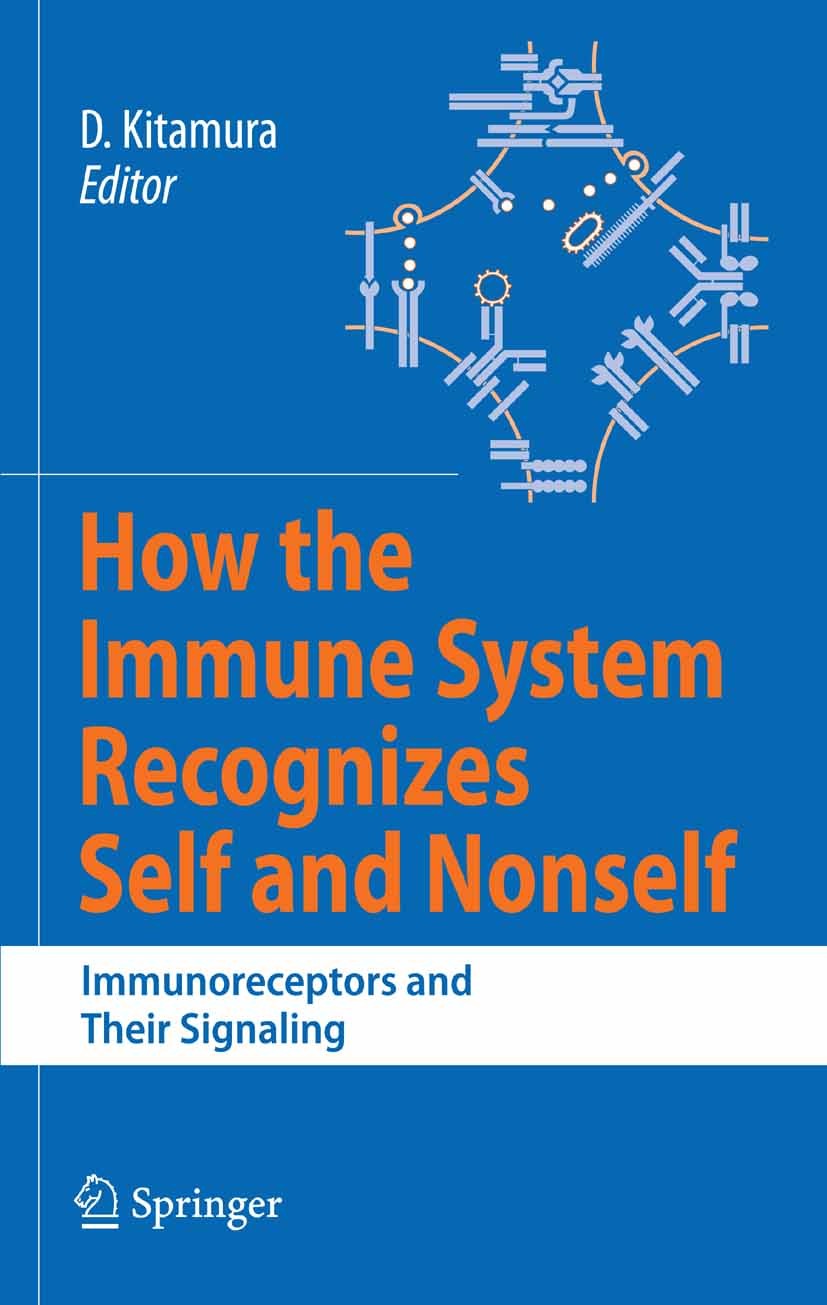| 書目名稱 | How the Immune System Recognizes Self and Nonself | | 副標(biāo)題 | Immunoreceptors and | | 編輯 | Daisuke Kitamura (Professor) | | 視頻video | http://file.papertrans.cn/429/428737/428737.mp4 | | 圖書封面 |  | | 描述 | How do you discriminate yourself from other people? This question must sound odd to you since you easily recognize others at a glance and, without any effort, would not mistake them for yourself. However, it is not always easy for some people to discriminate themselves from others. For example, patients with schi- phrenia often talk with “others” living inside themselves. Thus it is likely that n- mally your brain actively recognizes and remembers the information belonging to yourself and discriminates it from the information provided by others, although you are not conscious of it. This brain function must have been particularly important for most animals to protect their lives from enemies and for species to survive through evolution. Similarly, higher organisms have also acquired their immune system through evolution that discriminates nonself pathogens and self-body to protect their lives from pathogens such as bacteria or viruses. The brain system may distinguish integrated images of self and nonself created from many inputs, such as vision, sound, smell, and others. The immune system recognizes and distinguishes a variety of structural features of self and nonself components. | | 出版日期 | Book 2008 | | 關(guān)鍵詞 | Viruses; autoimmune disease; bacteria; cell; diseases; immune system; immunity; immunoglobulin; infection; ly | | 版次 | 1 | | doi | https://doi.org/10.1007/978-4-431-73884-8 | | isbn_softcover | 978-4-431-99831-0 | | isbn_ebook | 978-4-431-73884-8 | | copyright | Springer-Verlag Tokyo 2008 |
The information of publication is updating

|
|
 |Archiver|手機(jī)版|小黑屋|
派博傳思國際
( 京公網(wǎng)安備110108008328)
GMT+8, 2025-10-9 12:24
|Archiver|手機(jī)版|小黑屋|
派博傳思國際
( 京公網(wǎng)安備110108008328)
GMT+8, 2025-10-9 12:24


